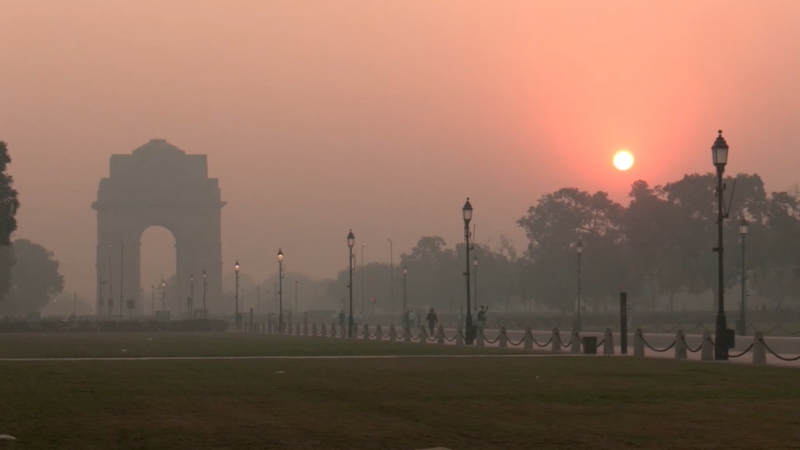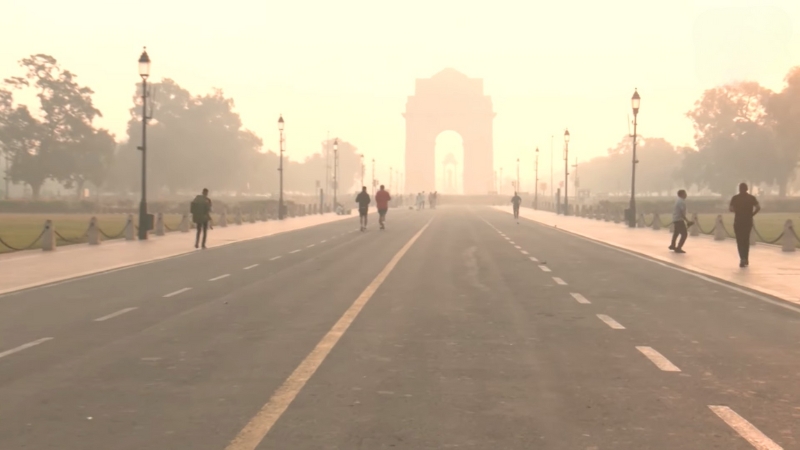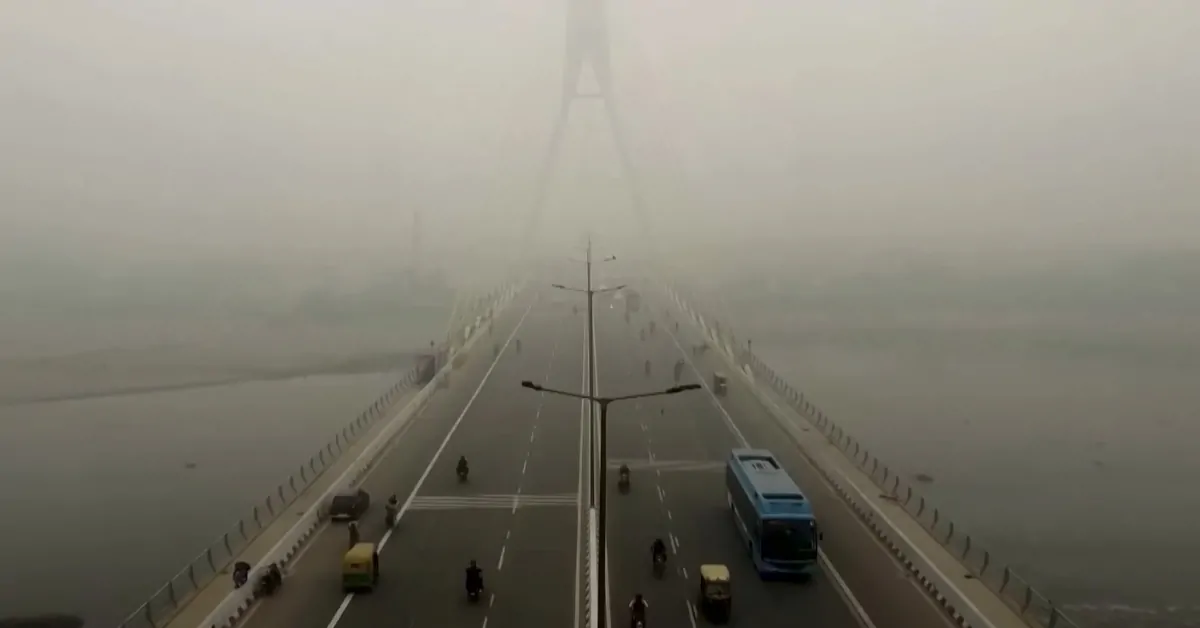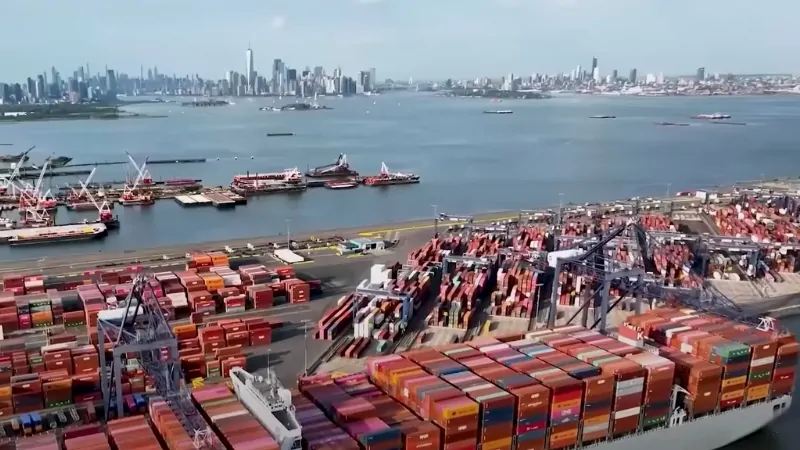When New Delhi fired silver iodide into the clouds to make it rain, it was not praying for a monsoon. It was fighting for oxygen. Thirty million residents of one of the world’s most polluted capitals woke under a sky so toxic it turned daylight amber.
In late October 2025, the city government and the Indian Institute of Technology Kanpur launched a desperate experiment — a Cessna aircraft armed with cloud-seeding flares meant to force rainfall and wash the air clean.
The rain never came.
Yet what unfolded above Delhi’s skyline says as much about the global climate emergency as it does about India’s smog crisis. Around the world, cities are starting to use the atmosphere itself as a treatment tool.
A City Out of Breath
The mission, the first of its kind in Delhi in more than five decades, released eight flares over districts such as Burari, Karol Bagh, and Mayur Vihar. The target was clear: trigger rainfall to knock particulates out of the air.
At the time, Delhi’s Air Quality Index (AQI) hovered around 950, nearly 20 times the World Health Organization’s safe limit. PM2.5 levels reached 56 times the threshold.
Real-time data from IQAir placed the city at the top of the global pollution charts. Schools shut down.
Hospitals reported a surge in asthma and cardiac emergencies. Flights were diverted as visibility fell below 100 meters.
IIT Kanpur later confirmed that the clouds lacked adequate moisture, rendering the trial “not completely successful.” A marginal reduction in particulate concentration was noted, but no rainfall occurred.
“The moisture content in the clouds yesterday was very low. We will continue our efforts in the near future,” said institute director Dr. Manindra Agarwal.
Engineering the Sky: Global Context
Cloud seeding, releasing particles like silver iodide or sodium chloride into clouds to accelerate condensation, has existed since 1946, when U.S. researchers at General Electric first demonstrated the process.
It has since been applied in dozens of countries, though results remain inconsistent.
Beijing famously used it to keep skies clear during the 2008 Olympics. The UAE now conducts more than 300 missions a year to combat desert droughts.
Pakistan experimented in Lahore in 2023. But Delhi’s use marked a pivot: weather modification not for agriculture, but for air survival.
The U.S. Connection

The United States, home to the original cloud-seeding pioneers, has quietly maintained programs across the arid West. According to a 2024 U.S. Government Accountability Office review, at least nine states currently run active operations.
Average precipitation gains range from 0 to 20 percent, with most projects delivering 1.5–8.8 percent measurable increases. California’s Department of Water Resources reports that seeding programs along the Sierra Nevada cost only a few million dollars annually yet yield large benefits to water storage.
North Dakota’s long-running program spends about $1 million per year, generating $20–40 million in estimated economic returns through reduced hail damage and improved crop yields.
Even with decades of American experimentation, scientists remain cautious. “It works best with the right clouds, the right moisture, and luck,” noted a National Center for Atmospheric Research (NCAR) assessment.
A Pew Research Center survey found 72 percent of U.S. adults worry about weather modification being used before its environmental effects are fully understood.
Cloud-Seeding in Numbers: Delhi vs U.S. Programs
Parameter
New Delhi (2025 Trial)
U.S. Western States (Active Programs)
Purpose
Air-quality cleanup (smog removal)
Water generation, drought mitigation
Agency / Organizer
IIT Kanpur + Delhi Govt
State water boards, private contractors
Technology
Silver iodide/sodium chloride flares
Silver iodide, dry ice, propane burners
Estimated Cost
₹1.9 crore (~$225 000 USD)
$1 – $5 million per state per year
Average Effectiveness
No rainfall; slight pollutant drop
+1.5 – 8.8 % precipitation gain
Scale
One Cessna flight, 8 flares
600 + annual flights (Colorado, Wyoming)
Public Perception
Emergency climate intervention
Drought management tool, mild opposition
Environmental Concerns
Chemical deposition in air / soil
Long-term silver accumulation in ecosystems
From Water Security to Air Security
Where western U.S. states seed clouds to feed reservoirs, Delhi did it to breathe. Both cases reveal how climate adaptation is shifting from prevention to crisis triage.
Los Angeles and San Francisco have already recorded PM2.5 levels rivaling Delhi’s during wildfire seasons. During the 2024 Canadian smoke wave, Chicago’s air quality temporarily ranked worst worldwide, forcing residents indoors for days.
In such emergencies, engineered rain could become a tempting solution. Researchers at the University of Colorado have even proposed integrating cloud seeding into wildfire-response frameworks. But as Delhi’s outcome proved, seeding cannot function without cooperative weather. Technology can only amplify nature, not replace it.
Pollution Trapped Beneath a Thermal Lid
Delhi’s chronic winter smog is the result of a “thermal lid”, a temperature inversion that prevents polluted air from dispersing. The smog accumulates from vehicle emissions, industrial output, agricultural stubble burning, and fireworks.
Each year after Diwali, despite partial bans, PM2.5 readings above 700 µg/m³ become routine
The haze inflames lungs and corrodes history: a Heritage Science study found blackening on the Red Fort’s sandstone caused by particulate deposition.
Global Cities, Shared Predicament
Delhi is not alone. Jakarta experiments with cloud modification to slow floods. Mexico City battles trapped ozone. Beijing manipulates rain during national holidays.
Long-term projects in Nevada’s mountains have shown promising results, highlighting cloud seeding’s potential in enhancing precipitation. #CloudSeeding #DRI #WaterInnovation#UnitedForWaterSecurity #RainEnhancement pic.twitter.com/QhP4QJFy9T
— UAEREP (@UAEREP) May 16, 2024
In the U.S., Nevada and Wyoming host over 600 cloud-seeding flights annually to sustain water basins.
As climate extremes intensify, the line between drought relief and urban survival blurs. What began as an agricultural practice is fast becoming an atmospheric emergency tool.
Technology as Emergency Medicine
Delhi’s $225 000 trial highlights an uncomfortable truth: cities are turning to technological “band-aids” instead of structural reform
In India, stalled transitions to electric mobility and weak enforcement of crop-burning bans keep emissions locked in place. In the United States, rising wildfire smoke and ozone alerts show that short-term mitigation often substitutes for long-term change.
Cloud seeding now functions less as a miracle than a mirror, reflecting how dependent modern civilization has become on reactive engineering.
The Lesson from Delhi

Artificial rain may someday supplement air-quality management, but it cannot replace emission cuts, reforestation, or industrial accountability. The Delhi mission proved that the atmosphere can be engineered, but not commanded.
For policymakers in both hemispheres, it stands as a warning: what New Delhi attempted in 2025 could be Los Angeles or Denver within a decade if structural pollution controls continue to lag. The skies above one continent already forecast the choices of another.
Related Posts:
- The Silent Crisis - Statistical Trends in Jockey…
- Collin, Tarrant, and Denton Counties Drive North…
- US Population Hits 340.1 Million, Marking Highest…
- Why Over 25 Million Americans Are Still Uninsured…
- Idaho’s Population Crosses 2 Million, According to New Data
- World Population Grows by Over 71 Million in 2024,…







